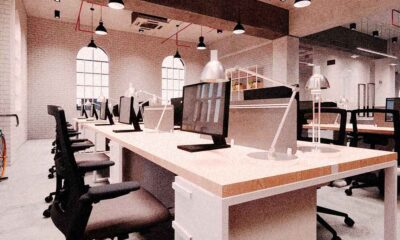Business
Financing Sustainable Buildings of the Future Today
With the pressing need for renewable energy sources amid the adverse impacts of climate change, businesses – especially those in the real estate sector – are now looking beyond profit as the only bottom line.
Sustainability has become the buzzword, not just as a corporate social responsibility concept, but as a business model that turns in revenues while helping save the environment.
Simon Paterno, EVP and Segment Head of Financial Products and Alternative Channels, says one of the easiest ways to go green and make money at the same time is to start with your building.
According to a study of the International Finance Corporation (IFC), buildings account for 36% of energy consumption and its greenhouse gas emissions contributes highly to global warming. To address this issue, the government came up with the Green Building (GB) Code to set regulations establishing minimum standards for building efficiency.
Paterno says companies planning to construct new buildings have to comply with this Code. It applies to all new construction of residential condominium buildings with a minimum total gross floor area (TGFA) of 20,000 sq.m; hotels or resorts, schools, hospitals, business offices and mixed-occupancy buildings with a minimum TGFA of 10,000 sq.m; and commercial malls with a minimum TGFA of 15,000 sq.m.
“Companies can just go their own way to make sure they comply with the code. At BPI, however, we have both the experts who can help with the technical side of the project and the financing solutions to make it happen. No need to talk to anyone else,” said Paterno.
“As part of being a responsible corporate citizen, we strongly support sustainable and green projects of both large and small and medium enterprises,” he said.
Under the GB Code, buildings with air-conditioning systems are required to meet efficiency requirements to cut down energy use. Wall-to-window ratio needs to be balanced with the amount of daylight that comes through glazed windows. Roof insulation is mandatory, and daylight-controlled lighting systems, especially those that dim or switch off lamps where there is sufficient daylight, must be installed.
Efficient water fixtures must be used, too, and rainwater harvesting from roofs is a must for non-potable use. A materials recovery facility will also be required for the collection and segregation of solid waste. Hospitals will be required to have isolated bins for hazardous wastes.
BPI has been blazing the trail when it comes to sustainable energy finance (SEF), with a dedicated team that helps clients turn their buildings into energy-saving, low carbon, and environmentally-friendly structures.
“Aside from the opportunity to help clients comply with the Philippine Green Building Code, our SEF Program underpins our commitment to doing business with a purpose. It is our contribution to the protection of the environment,” said Paterno.
Even before the GB Code was launched in 2015, BPI was already championing the cause of sustainable energy financing several years back. From 2008 to December 2017, it has provided financing for 291 projects involving energy efficiency, renewable energy and climate resilience, amounting to Php 115 billion in loan disbursements.
BPI has partnered with the IFC, a member of the World Bank Group, in helping clients with free energy walk-through audits and technical evaluation of renewable and climate resilience projects. IFC likewise provides a 50 percent guarantee cover for BPI-SEF eligible loans of up to P200 million.
BPI’s SEF Program offers financing for projects covering energy efficiency (shifting to equipment that consume less energy while achieving the same or higher output); renewable energy (production of energy from naturally-replenishing sources); and climate resilience (structural and operational projects aimed at preparedness for impacts of extreme weather conditions).
Clients may choose from three possible financing options: 1. capital expenditure financing for new building construction, expansion or modernization of operations and acquisition of machinery and equipment; 2. working capital financing for short-term needs such as the purchase of raw materials; and 3. leasing to finance the use of an asset or equipment over a specified period of time.
“Our financial solutions will enable clients to invest in technologies that improve energy generation, distribution and use,” Paterno said.
“This is not just an opportunity to lessen carbon emissions which contribute to global warming. It will result in reduced operating and energy expenses by at least 30 percent – savings that go straight to your bottom line,” he said.
































